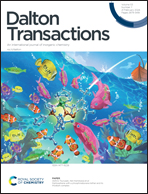Oxidation-enabled SnS conversion to two-dimensional porous SnO2 flakes towards NO2 gas sensing†
Abstract
Tin dioxide (SnO2)-based electronic materials and gas sensors have attracted extensive attention from academia and industry. Herein we report the preparation of two-dimensional (2D) porous SnO2 flakes by thermal oxidation of 2D SnS flakes that serve as a self-sacrificial template. An oxidation-enabled, temperature-dependent matter conversion from SnS through three-phase SnS–SnS2–SnO2 (400 °C) and two-phase SnS2–SnO2 (600 °C) to pure-phase SnO2 (≥800 °C) is disclosed by means of combined XRD, TG-DSC and XPS studies. Meanwhile, the associated chemical reactions and the mass and heat changes during this solid-state conversion process are clarified. The as-prepared 2D SnO2 flakes exhibit structural porosity with tunable pore sizes and crystallite sizes/crystallinity, resulting in superior potential for NO2 sensing. At the optimized operating temperature of 200 °C, the prototype gas sensors made of porous SnO2 flakes show competitive sensing parameters in a broad NO2 concentration range of 50 ppb–10 ppm in terms of high response, faster response/recovery speeds, and good selectivity and stability. A sensing mechanism involving the adsorption and desorption of NO2/O2 molecules and the possible surface reactions is further rationalized for the SnO2 NO2 gas sensors.



 Please wait while we load your content...
Please wait while we load your content...